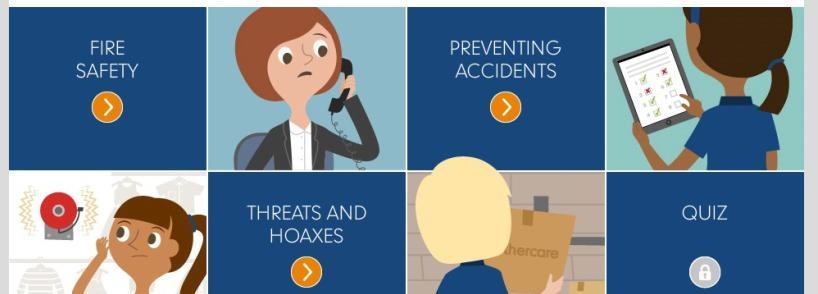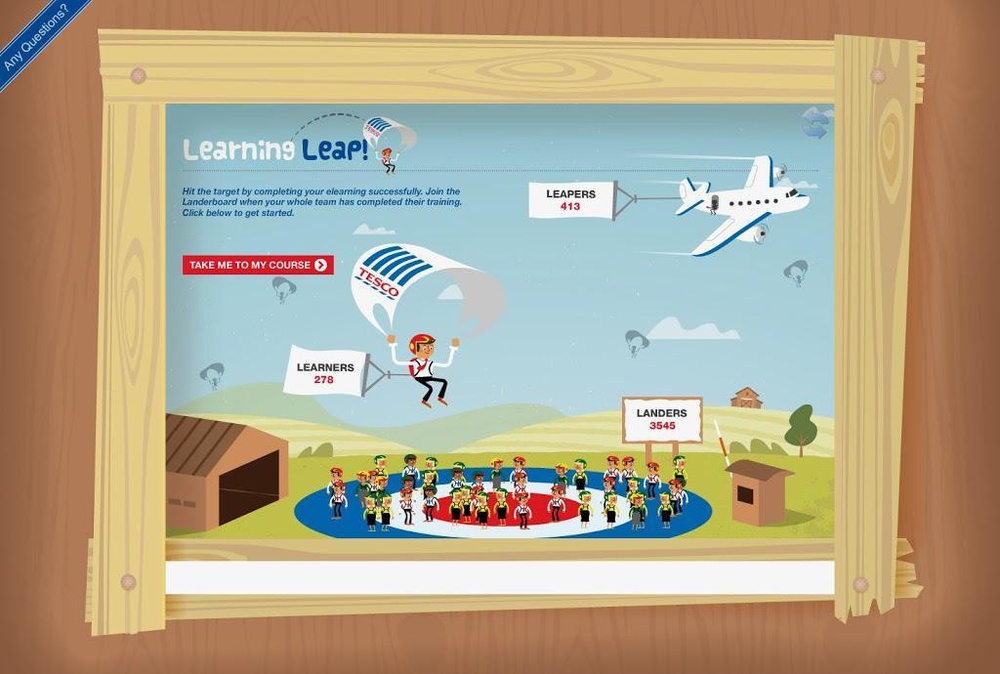Reach more learners - 6 ideas for marketing your training

What should you do when employees want to develop their skills but they can’t find the training they need?
61% of L&D leaders do not have a clear communications policy, according to a Towards Maturity report on consumer learners. It’s no surprise that 40% of learners say they can’t find training that’s relevant to them.
If you’ve spent time developing and curating content that is perfect for your learners, you need a plan to make sure they can find it.
We’re going to explore some key tactics that will get your training noticed.
Plan a campaign
A campaign is a series of coordinated actions through different channels that promote your training. Taking your time to plan your approach is crucial to getting the best result.
We’re going to offer some general tips on creating an effective campaign and finish by giving you an Elearning Communications Plan Template so you can develop your own plan.
A communications plan gives you the blueprint for all the marketing actions you’re going to take. Using our template you can identify the best way to get your digital training course out to the people who need it.
When you’re filling in your own plan read about some of the other companies who have used the campaign approach successfully to market their online training.
Identify your audience
The audience for your campaign isn’t just the learner who will be taking the training. In many cases you will want to target the line managers of the learners as one of the key stakeholders.
“81% of all staff say that manager support is essential/very useful for learning what they need for their job” – Towards Maturity
The more compelling you can make the message, the more chance there is of it being passed on.
Think about how the training is going to benefit the person you’re targeting.
Store managers at a frozen food business were able to identify talented staff who were likely to want to pursue a long term career by analysing their performance in an induction course. Providing managers with the information they need to better develop their team is a benefit which isn’t obvious unless it’s highlighted by L&D.
By explaining the benefits for the line managers, as well as the learners who they interact with, you increase the impact of your message.
With different audiences you need to take different approaches, so it’s important to set out your messages and channels for each audience.
Make it consistent
Your business probably has a brand style guide, a document that tells your marketing and design teams how to portray your brand to your audience.
What you might not have is a training style guide, explaining how the brands values should be communicated to your own learners.
The two documents may be closely related visually, but the tone of voice and language used when training internal staff will be different to content aimed at potential clients or customers.
Creating a style guide for your learning and the campaign around it will help keep your message consistent. Making sure the same style is carried through your training content and your communications around it means learners are familiar with the course before they take it.

When Mothercare wanted to introduce a new range of compliance modules they incorporated the illustrative style of the content into print posters. The posters were placed where employees would see them and acted as an introduction to the theme and style of the courses.
Create a micro site
Anything you can do to make it easier for a learner to access the training will help. Put yourself in their shoes and think about the user experience they go through when finding and taking a course.
Is there anything you can do to improve this process for your learners?
Micro sites offer a great way to drive people to your content without bogging them down in a wider Learning Management System (LMS).
The Tesco Learning Leap micro site helped drive 4000 learners to complete compliance training in 6 weeks.

Whenever you need learners to complete a specific piece of training consider a micro site. When built into a wider campaign to ensure learners can find and access the site, it’s a valuable tool for L&D teams.
Use a variety of channels
The best marketing campaigns include user-generated content to inform and add value to the original message.
Getting your learners involved with the campaign could be as simple as making it easy for them to share their own results or opinion on the training with colleagues.
You could include a forum or social space inside your own LMS and encourage learners to take part in a discussion about the training there. The Launch&Learn LMS has a forum add-on that can act as a social hub for your employees.
Alternatively, L&D can use existing social platforms like YouTube or LinkedIn to help complement the training and drive more learners to it.
If you get in front of your employees on the channels they are already using you can present them with a shortcut to the course content.
If you can identify influential colleagues who already use these platforms, you can include them in the design of the campaign to make sure it’s appealing to learners on that channel.
Make it easy for everyone
Some people are going to miss your campaign, however much you try. Remote working, annual leave, sabbaticals, they can all mean that employees miss your promotional efforts.
There are also learners who will want to take the training in their own time, at their own pace. On demand has become a part of consuming content be it television, movies, music or training.
Whatever methods you use to promote your digital training make sure it’s available when the learner wants to take it, wherever they are.
Using a multi-device approach helps, but ensuring it can be found on your learning platform is just as important. Some systems allow you to add metadata to your course or highlight it to learners within the platform in other ways.
Investigate the options available in your LMS for making the training stand out for people who haven’t been exposed to your campaign.
Always remember that everyone is different and one approach will never work perfectly for everyone. Finding the best compromise of appealing to a wide audience and a personalised approach is one of the hardest aspects of marketing your elearning.
Your six tips for marketing your elearning project are:
- Plan a campaign
- Identify your audience
- Make it consistent
- Create a micro site
- Use a variety of channels
- Make it easy for everyone
With these, putting the theory into practice when planning how to market your digital training should be easy.